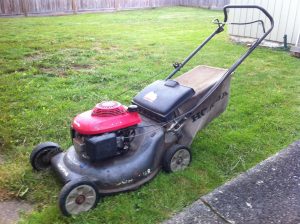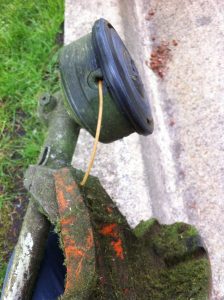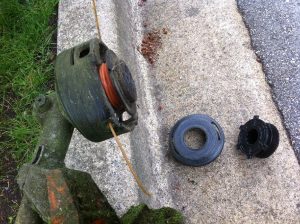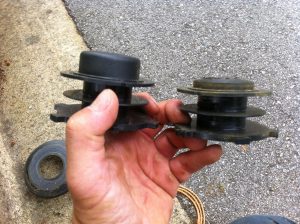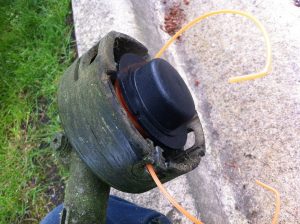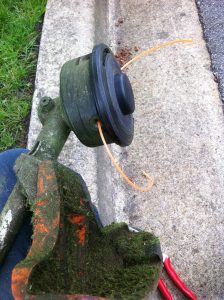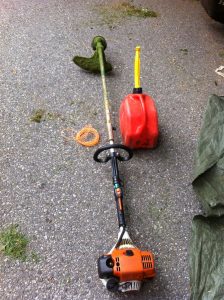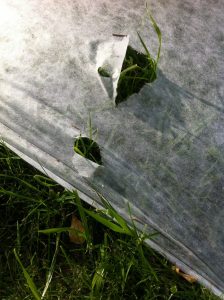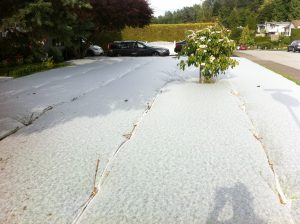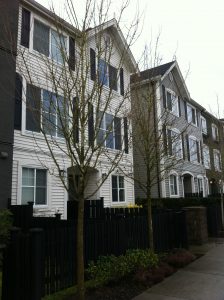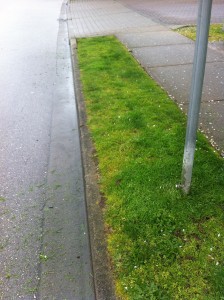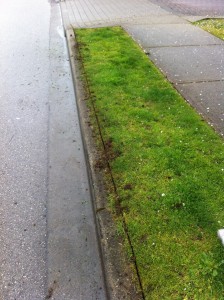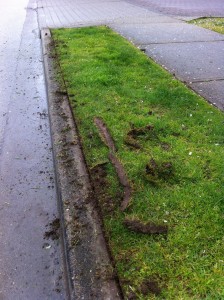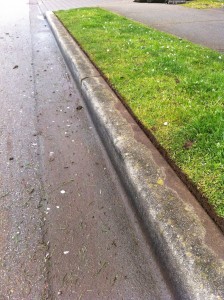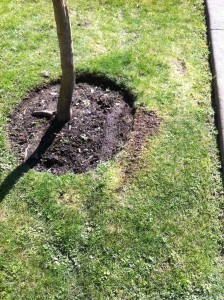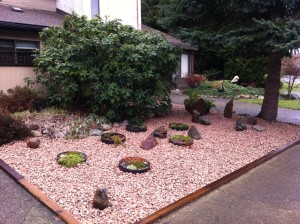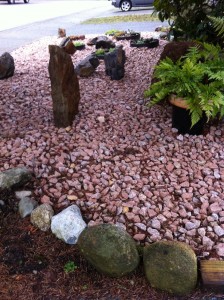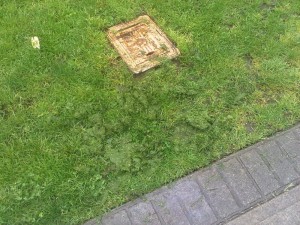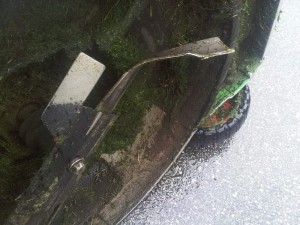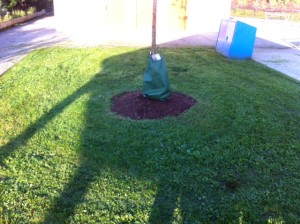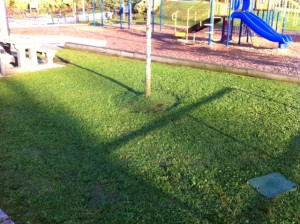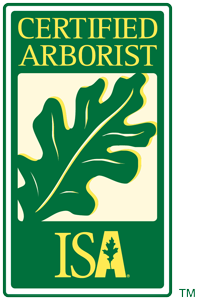So your lawn has been damaged by animals looking for European chafer beetle grubs. Now what? Do nothing and look at the mess? Get more grass? Or give up and go for alternatives?
I have clients on the Westwood Plateau who last year witnessed black bears digging through their back yard lawn looking for chafer grubs. Their lawn was weak: areas covered by trampoline were mossy, there was no regular irrigation or fertilization. Chafer beetles laid eggs in it the previous June.
I came to install mulch and prune their evergreens. Could I fix the damage? Yes, of course. Do regular lawn maintenance? With pleasure.
Client wants more grass
There are home owners who love, LOVE, their green grass. This particular home owner wanted more grass. He installed a new irrigation system, paid for my fix and ordered nematodes. The lawn will be cut bi-weekly and higher than in previous seasons.
Step 1: cut the lawn short and remove lawn chunks
Step 2: power rake the lawn, rake up the debris and mow it again
Step 3: install good lawn and garden soil and rake it in
Step 4: overseed, gently rake in seeds, add starter fertilizer, roll it with a pin to level any bumps and to ensure soil-seed contact; and water
Step 5: check for germination after 7+ days and overseed any obvious open spots
Step 6: order nematodes in June and apply them to the lawn in late summer/fall
Step 7: cut higher, irrigate and fertilize as required
Clients who love their grass can repair their lawns, maintain them well, and apply beneficial nematodes in the third week of July. There are no guarantees with nematodes but this home will be a good test site. More on nematodes in a future blog.



